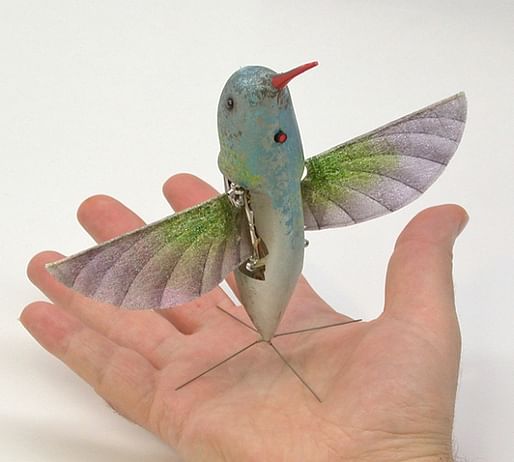

Birds have remarkable flight capabilities...They make it look effortless, but engineering a drone to do the same is anything but. It’s a major engineering feat to harness the evolutionary talents of a bird and translate them into a robot that can deliver packages to your doorstep. By understanding how birds have mastered the ability to swoop and dive, [Stanford professor David] Lentink and his team [of mechanical engineers] hope to inform microdrone design. — Al Jazeera
Similar to biomimicry (and its correspondent field of architectural thinking), bio-inspired design takes it cues from biological systems, although it entails simplification, enhancement and non-mimetic adaptation of observed phenomena rather than replication. Bio-inspired robotics, specifically, is a rather new field, although its origins can be traced back to the earliest engineering projects. For example, Leonardo Da Vinci famously studied birds, in particular kites, when he drew out plans for wings that could enable human flight.

The US military is a major player in the field of bio-inspired robotics. In 2011, the Defense Advanced Research Projects Agency (DARPA) released images of its own hummingbird-inspired drones, pictured above. Manufactured by AeroVironment the Nano Air Vehicle is capable of flying along three axes of motion as well as hovering in mid-air. Equipped with a small camera, the 19 gram drone is small enough to surveil without attracting much attention.

DARPA studied cheetahs in their design for fast-moving robots aptly named Cheetah Bots. Clocking in at speeds up to 28.3 mph miles per hour, the Cheetah Bot can run more quickly than Usain Bolt, widely regarded as the fastest human alive. The program manager Gill Pratt told National Geographic: “Our Cheetah bot borrows ideas from nature’s design to inform stride patterns, flexing and unflexing of parts like the back, placement of limbs and stability. What we gain through Cheetah and related research efforts are technological building blocks that create possibilities for a whole range of robots suited to future Department of Defense missions.”

Maybe the scariest animal-inspired robot I've seen, the Legged Squad Support System (or LS3) is designed to serve as a military pack mule, capable of carrying ammunition and other supplies to help alleviate physical loads for its human counterparts. The LS3 already has the capacity to follow humans and would, ideally, be able to respond to non-verbal signals.
Meanwhile, RFID (Radio Frequency Identification) technology is increasingly being installed into domestic dogs and cats in the form of microchip implanting. About the size of a grain of rice, microchips can store information about the pet's owners as well as the pet's medical history. While already appearing banal, such technologies are increasingly blurring lines of nature/technology, animal/robot, and even human/machine. In the cities of the future, will cyborg-cats hunt for nano-drones?
No Comments
Block this user
Are you sure you want to block this user and hide all related comments throughout the site?
Archinect
This is your first comment on Archinect. Your comment will be visible once approved.